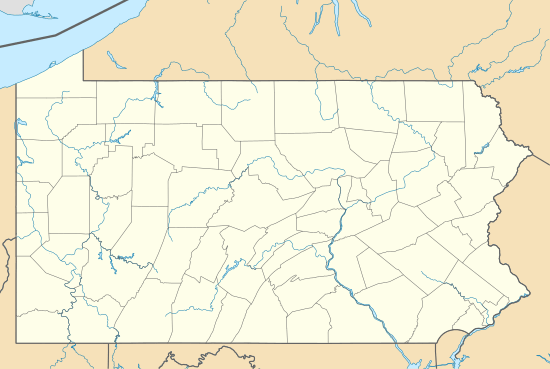Harriton House
|
Bryn Mawr | |
|
Harriton House as it appeared circa 1919 | |
  | |
| Location | 500 Harriton Road, Bryn Mawr, Pennsylvania |
|---|---|
| Coordinates | 40°02′05″N 75°18′41″W / 40.03472°N 75.31139°WCoordinates: 40°02′05″N 75°18′41″W / 40.03472°N 75.31139°W |
| Area | 13.8 acres (5.6 ha) |
| Built | 1704 |
| NRHP Reference # | 73001643[1] |
| Significant dates | |
| Added to NRHP | July 2, 1973 |
| Designated PHMC | June 12, 1963[2] |
Harriton House, originally known as Bryn Mawr, is a historic house on Pennsylvania's Main Line, most famously the residence of Charles Thomson, the secretary of the Continental Congress. It was originally built in 1704 by Rowland Ellis, a Welsh Quaker, and was called Bryn Mawr, meaning high hill. The modern town of Bryn Mawr is named after the house, and the National Register of Historic Places has it listed under the original name.
It was originally built as a T-shaped, two-story fieldstone dwelling with a gable roof. The original front section is approximately 37 feet wide and 22 feet deep and the rear extension is approximately 18 feet wide and 23 feet deep. A one-story brick kitchen was added to the end of the rear extension. The house was renovated in 1911 and major additions were made in 1926.[3]
It was added to the National Register of Historic Places in 1973.[1]
Harriton Association
The Harriton Association was started in 1962 by a group of people who were concerned that the house and its surrounding grounds, which were privately owned at the time, would be subdivided and developed. The Association removed the 1926 additions and restored the house to look as it did when Charles Thomson lived there in time for the 1976 United States Bicentennial.
The Association operates Harriton House as a museum and cultural resource. Tours are given from Wednesday through Saturday, and special events are held at the house throughout the year.
References
- 1 2 National Park Service (2010-07-09). "National Register Information System". National Register of Historic Places. National Park Service.
- ↑ "PHMC Historical Markers". Historical Marker Database. Pennsylvania Historical & Museum Commission. Retrieved December 30, 2013.
- ↑ "National Historic Landmarks & National Register of Historic Places in Pennsylvania" (Searchable database). CRGIS: Cultural Resources Geographic Information System. Note: This includes George Vaux (May 1972). "National Register of Historic Places Inventory Nomination Form: Bryn Mawr" (PDF). Retrieved 2012-03-24.

